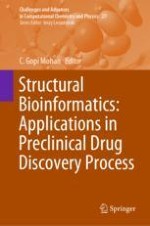2019 | OriginalPaper | Buchkapitel
Structure-Based Drug Design with a Special Emphasis on Herbal Extracts
verfasst von : D. Velmurugan, N. H. V. Kutumbarao, V. Viswanathan, Atanu Bhattacharjee
Erschienen in: Structural Bioinformatics: Applications in Preclinical Drug Discovery Process
Aktivieren Sie unsere intelligente Suche, um passende Fachinhalte oder Patente zu finden.
Wählen Sie Textabschnitte aus um mit Künstlicher Intelligenz passenden Patente zu finden. powered by
Markieren Sie Textabschnitte, um KI-gestützt weitere passende Inhalte zu finden. powered by
